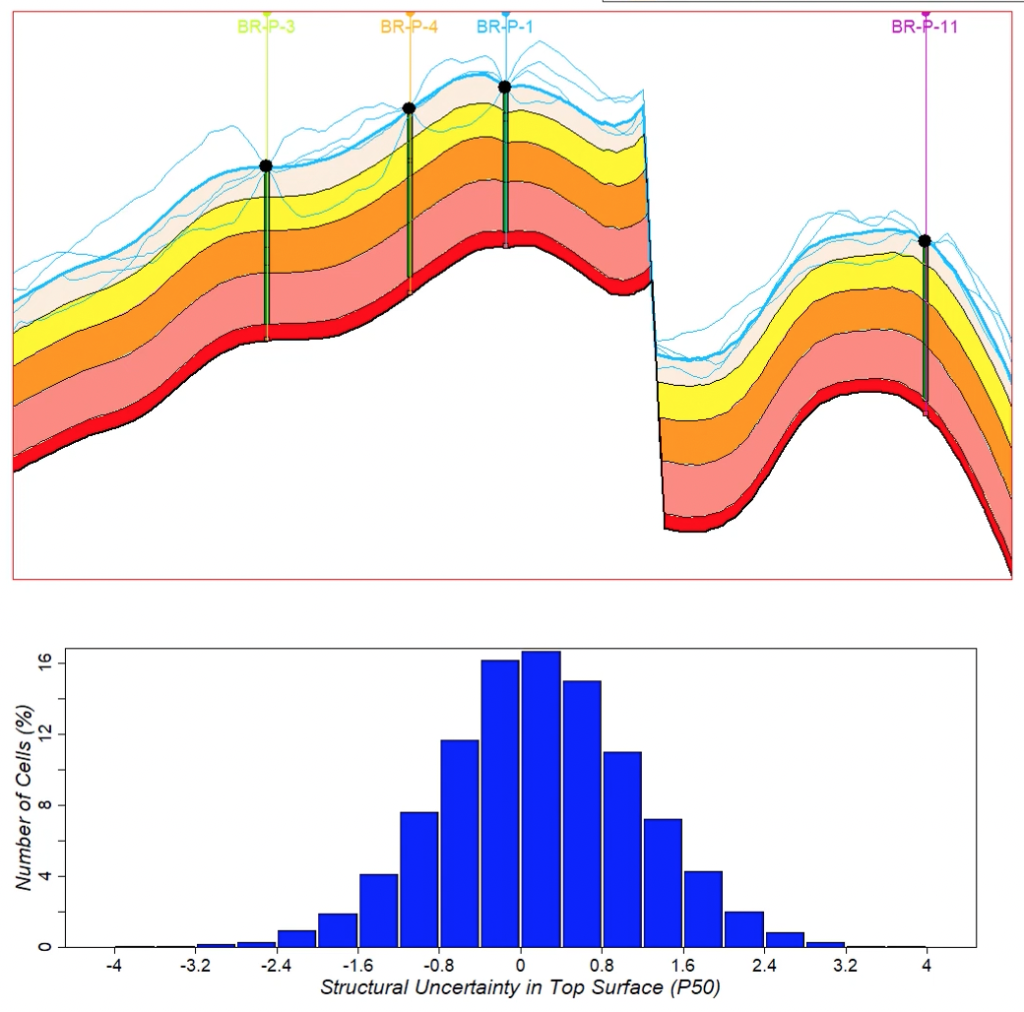The fundamental component of risk assessment
For too long reservoir modelling has been in the pursuit of the single “base case” or “best technical estimate” model, which saw uncertainties as a nuisance that had to be reduced or even eliminated. Tornado charts were used to establish relative sensitivities of a model to different uncertainties with the aim of keeping only the top 5 or 10, and discarding all others. The modelling of uncertainties was equally crude, often using constant or multiplier shifts from the base case model to simulate an uncertainty bracket.
Resoptima solutions: uncertainties done right
Resoptima ensemble-based modelling sees uncertainties as what they are: a reflection of the fact that we know little about the subsurface at any location other than where we have drilled boreholes.

Take for example the blue lines to the left which represent the uncertainty in the top surface of the reservoir. Clearly at the well locations we can more tightly tie the depth of this surface, but away from well control this uncertainty can grow. Each realisation of a surface is made up of many points and at any point in space there will be an uncertainty related to the top depth of the reservoir, represented by creating multiple realisations of this surface.
Each one of the probable surfaces will contain thousands of points, so we see that a full model of the uncertainty in the top surface alone using an ensemble will comprise hundreds of thousands to millions of uncertain points. This is repeated with all the 3D modelling parameters which we also treat as uncertain. It is easy to understand why other “uncertainty” tools seek to simplify this to a handful of modifiers rather than tackle the problem head-on. Also it is clear that to work within such an uncertainty space it is important to use algorithms which are fit for this purpose and scale well to solve this problem.
Uncertainties are good
Contrary to the old thinking that uncertainties are bad, they are the very foundation of the whole decision-making process. Without an awareness of all that is possible, one creates blind spots where specific scenarios, however unlikely at a given time, are no longer considered. After adopting the mindset of uncertainty-centric modelling, operators realize that they have a much more robust understanding of the reservoir, which in turn helps them make truly informed decisions.
Read about the capabilities of the ResX solution for more information.
